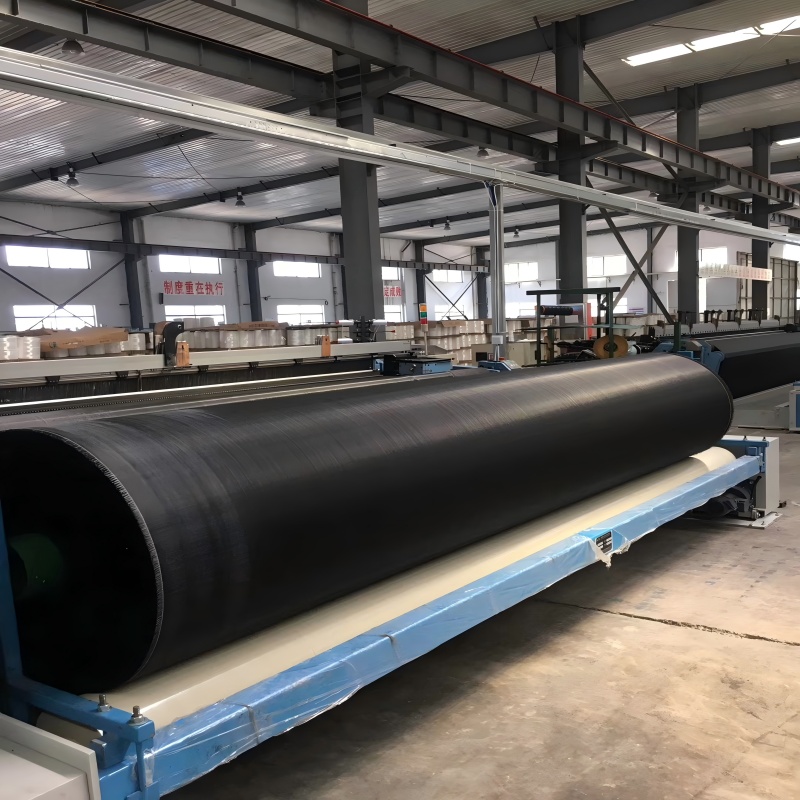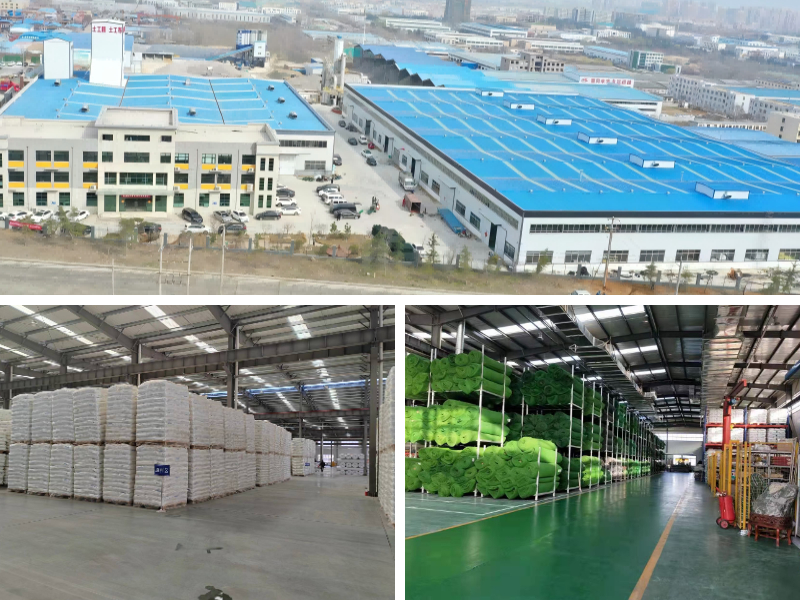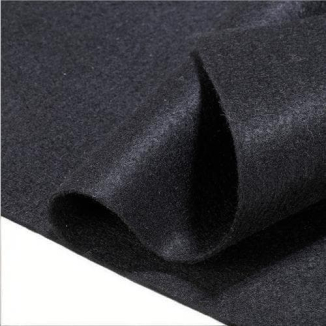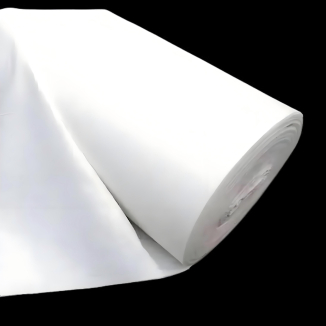Geo Fabric Bags
High-strength Durability
Made of polypropylene (PP) or polyethylene (PE) woven materials, it is resistant to ultraviolet rays, acids and alkalis, and tensile forces, with a service life of 10 - 20 years.
Flexible customization
Dimensions (diameter 0.5 - 10 meters, unlimited length) and filling materials (sand, gravel, soil, industrial waste, etc.) can be customized according to project requirements.
High cost - performance ratio
Compared with concrete or traditional stone protection, the cost is reduced by 30% - 50%, and the transportation volume is small (saving storage space after folding).
Product Introduction:
Geo Fabric Bags are woven from high - molecular materials such as polypropylene (PP) and polyester (PET), and the performance of some products is improved through a composite structure design (such as the combination of fabrics with different pore sizes in the inner and outer layers). For example, a non - woven geotextile with good water permeability is used for the outer layer, and a high - strength woven geotextile is used for the inner layer, forming a "filtration - bearing" dual - function layer.
UV Resistance and Weather Resistance: By adding carbon black particles, anti-aging masterbatch, or surface coating treatment, the outdoor service life can be significantly extended (up to 10 - 20 years), making it suitable for environments with high UV radiation (such as coastal areas).
Filtration Performance: By adjusting the fabric pore size (usually 0.05 - 2mm), the solid - liquid separation effect can be precisely controlled. For example, when treating municipal sludge, 99% of solids can be intercepted, and the turbidity of the filtrate can be reduced by 92% - 96%.
Efficient solid-liquid separation: High-moisture-content mud (such as dredged silt and municipal sludge with a moisture content > 80%) is pumped into the geotextile tube bags. The water drains out through the pores of the fabric, and the solid particles consolidate under gravity and filling pressure. The volume can be reduced by 70% - 90% within one month, significantly reducing subsequent disposal costs.
Product Parameters:
project | metric | |||||||||||||
| Nominal strength/(kN/m) | ||||||||||||||
| 35 | 50 | 65 | 80 | 100 | 120 | 140 | 160 | 180 | 200 | 250 | ||||
| 1 Tensile strength per (kN/m) ≥ | 35 | 50 | 65 | 80 | 100 | 120 | 140 | 160 | 180 | 200 | 250 | |||
| 2. Weft tensile strength / (kN/m) ≥ | After tensile strength is multiplied by 0.7 | |||||||||||||
| 3 | Maximum elongation at maximum load/% | warp direction ≤ | 35 | |||||||||||
| broadwise ≤ | 30 | |||||||||||||
| 4 | Top penetration force /kN is greater than or equal to | 2 | 4 | 6 | 8 | 10.5 | 13 | 15.5 | 18 | 20.5 | 23 | 28 | ||
| 5 | Equivalent aperture O90 (O95)/mm | 0.05~0.50 | ||||||||||||
| 6 | Vertical permeability coefficient/(cm/s) | K× (10⁵~102) where: K=1.0~9.9 | ||||||||||||
| 7 | Width deviation rate /% ≥ | -1 | ||||||||||||
| 8 | Tear strength in both directions /kN ≥ | 0.4 | 0.7 | 1 | 1.2 | 1.4 | 1.6 | 1.8 | 1.9 | 2.1 | 2.3 | 2.7 | ||
| 9 | Unit area mass deviation rate /% ≥ | -5 | ||||||||||||
| 10 | Length and width deviation rate/% | ±2 | ||||||||||||
| 11 | Joint/seam strength a/(kN/m) ≥ | Nominal strength x 0.5 | ||||||||||||
| 12 | Anti-acid and alkali properties (strong retention of warp and weft Rate) a /% ≥ | Polypropylene: 90; other fibers: 80 | ||||||||||||
| 13 | Ultraviolet resistance (Xenon arc lamp method) b | The strength retention rate in both directions is /%≥ | 90 | |||||||||||
| 14 | Ultraviolet resistance (fluorescencePhotometric ultraviolet lamp method) | The strength retention rate in both directions is /%≥ | 90 | |||||||||||
Product Applications:
Environmental Protection and Solid Waste Treatment
Sludge Dewatering and Disposal: Municipal sewage treatment plants and industrial sludge (such as petrochemical and paper - making sludge) are dewatered through geotextile tubes, significantly reducing the amount of landfill or incineration. For example, a chemical plant uses geotextile tubes to treat high - concentration chemical sludge, and the moisture content is reduced from 85% to less than 40% after dewatering, which can be used as a building material raw material subsequently.
River and Lake Dredging: In - situ dewatering technology avoids the secondary pollution of dredged sludge. For example, the Dianchi Lake in Kunming uses geotextile tubes to treat bottom mud, reducing transportation costs and preventing the spread of eutrophic water.
Landfill Site Restoration: It is used for landfill site closure covering, leachate adjustment pond seepage prevention or sludge pond treatment. For example, a landfill site in Suzhou uses a geotextile tube platform to treat the sludge pond, achieving dehydration, solidification and site reuse simultaneously.
Hydraulic Engineering and Coastal Protection
Breakwaters and Revetments: Geotextile tubes filled with sand and gravel are stacked to form a flexible wave - preventing structure, absorbing wave energy and replacing traditional rip - rap or concrete revetments. For example, due to the erosion of stormwater runoff on a riverbank in Selangor, Malaysia, geotextile tubes combined with three - dimensional vegetation nets were used for restoration, effectively controlling soil erosion and restoring the ecosystem.
Cofferdams and Temporary Works: In port and bridge construction, geotextile tube cofferdams can quickly create a dry construction site. For example, in the project of the west anchor artificial island of the Shenzhen - Zhongshan Passage, through the combination of filling geotextile tubes and sand bodies, the soft foundation treatment and island filling were completed within half a year.
Dike Reinforcement and Flood Control: It is used for anti - seepage of old dikes, landslide control, or temporary heightening during flood seasons. For example, in the wetland restoration project in Louisiana, USA, geotextile tube dikes, combined with vegetation planting, not only prevent floods but also promote the restoration of the wetland ecosystem.
Special Environments and Industrial Applications
Ocean Engineering: Used for the foundation reinforcement of offshore oil platforms, the protection of submarine pipelines, or the construction of artificial reefs. For example, geotextile tubes filled with sand and gravel form an "ecological reef body", providing habitats for marine organisms and preventing pipelines from being damaged by scouring.
Mining and Energy Industry: Handling tailings slurry, acidic wastewater, or being used as mine backfill materials. For example, a copper mine uses geotextile tubes to treat high-sulfur tailings, and through neutralizers and dehydration processes, heavy metals are solidified, reducing the risk of environmental pollution.
Adaptability to Extreme Climates:Frost Resistance and Thawing Resistance: In alpine regions, geotextile tubes with added frost and thaw resistance particles are used to prevent frost heave damage in winter. For example, during the winter construction of a port in Northern Europe, the geotextile tube cofferdam remained stable in an environment of - 20°C.6.
Saline-alkali Resistance: In the Middle East, geotextile tubes made of saline-alkali resistant materials are used for coastal protection to resist seawater erosion and the corrosion of high-salt soil.
Civil Engineering and Infrastructure Construction:
Foundation Reinforcement and Soft Foundation Treatment: In swampy and filled land foundations, lay multiple layers of geotextile tubes and fill them with sand and gravel to improve bearing capacity and stability, replacing traditional gravel pile or drainage board processes.
Slope Protection and Ecological Restoration: Fill geotextile tubes with planting soil and grass seeds for mine re - greening, highway slope greening, or expansive soil treatment. For example, the slope of a certain highway used geotextile tubes combined with hydroseeding technology to achieve vegetation coverage within 3 months, preventing landslides and beautifying the environment.
Temporary Roads and Construction Platforms: The folded geotextile tubes, after being quickly filled, can be used as the base of temporary roads or construction platforms, suitable for complex terrains (such as tropical rainforests and permafrost areas), reducing damage to the original environment.
Geo Fabric Bags, with their material innovation, functional integration, and environmental characteristics, are becoming one of the core solutions for global infrastructure construction and ecological governance. Whether it is coastal protection, sludge treatment, or mine restoration, their efficient, economic, and sustainable characteristics provide a green transformation path for traditional engineering challenges. In the future, with the integration of smart materials (such as self-healing fabrics) and digital construction technologies, the application scenarios of geotextile tubes will be further expanded, promoting the industry to develop towards a low-carbon and resilient direction.












